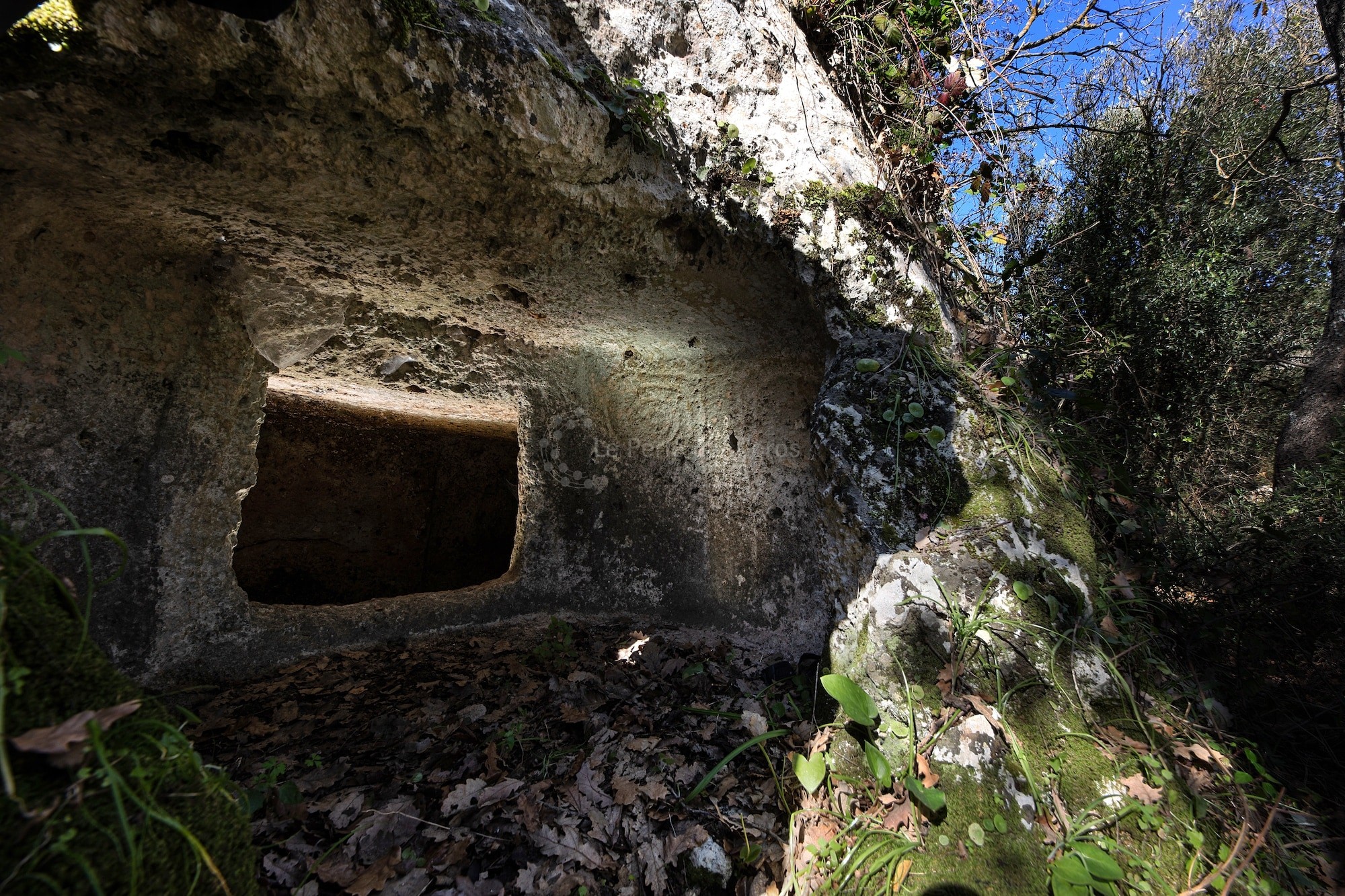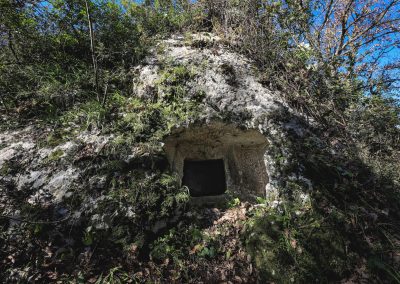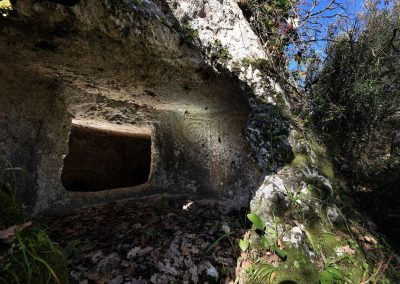
Cargeghe
Archaeological area of S’Elighe Entosu
The Neolithic necropolis of Giorré, S’Elighe Entosu, is found to the east of the village of Cargeghe, between two rocky uplands called Sa Rocca de Mesudie – Pedras Serradas – and Giorrè, bordering the territory of Florinas. The site is at the centre of important settlements of the Neolithic period and represents an interesting example of Prehistoric Sardinian funerary art. The steep valley of Giorrè S’Elighe Entosu is characterised by a typical calcareous formation that shows numerous erratic blocks and rocky surfacing. In this valley the river Rio S’Iscia-Sa Paula stretches out (the river has three names, S’Iscia, River of the Mills, Riu de Santu Pedru or, the least used, Rio Mannu), which several springs originate from. The first evidence of a settlement in the area dates back to the early Neolithic as indicated by the hypogeal tombs. Any traces of their corresponding villages are missing. Within the Nuragic Age (tn* Bronze Age, 1800-1500 BC) several towers and walls were erected in strategic and precise spots, dominating the natural passage of S’Elighe Entosu, represented by the following nuraghe: Pedra Serradas, Sant’Andria, Sa Binistra Mala in Florinas, Pala de Sa Rughe and, finally, Giorrè-S’Elighe Entosu in Cargeghe. Moreover, during the Nuragic period, the tombs with an architectural plan were excavated anew, imitating the megalithic tombs of the giants, along with the exclusive hypogeum of Giorrè S’Elighe Entosu X and the tombs of Pascialzos I – II in Su Padru. Recently, the megalithic tombs of subaerial construction were discovered, near the hill of Sa Tanca de Su Segnore. To date, thirteen hypogeal have been found at the necropolis of Giorrè S’Elighe Entosu. The tombs fan out at different distances from each other, exploiting outcropping rock and erratic calcareous blocks. The entrances to the tombs open above the ground surface: this is the case for tombs n. II, IV, VIII, XI, XIII, while the only entrance at ground level is that of Domus I. The entrance doors are preserved integrally in the cavities I, II, III, VIII and XIII, while the rest have been enlarged by humans or deformed by exogenous agents. Some of these were preceded by a short pavilion with the aim of preserving them from rain water infiltration. Some of these carved grottos have interesting engraved or carved architectural decorations, on the rock walls of the antechambers and main chambers, inspired by copying the homes of the living. You can find baseboards, half pilasters, bands, ceilings and columns. Among the other elements present on the surface of the tombs, are the motifs and symbols of a Prenuragic religiousness, such as bull protomes, spirals, and false doors. To make the idea of a prehistoric home even more realistic there are hooves, bands, half pillars, frames, steps and seven dividing walls in the most important rooms. The half pillars of tomb II are quite meaningful, slightly prominent as compared to the wall, placed on rectangular bases created when carving out the domus. These bases probably represent the stones placed around the wooden poles once used to support actual huts. Some frames even mimic construction elements, such as vertical and horizontal support poles. In particular, the frame of Tomb VIII, that delimits the door of chamber B, resembles trilithic dolmen architecture, almost as if to imitate an entry made of stone or strong wooden supports. Other elements that copy actual huts are the columns still present in the main chamber of Tomb VII that mimic thick poles supporting the ceiling.


